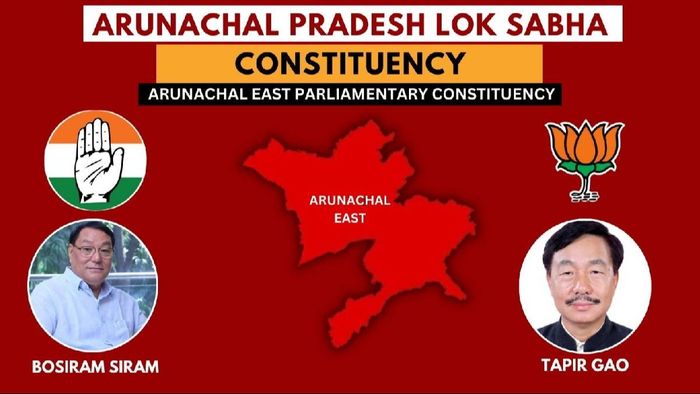Know Your Constituency: Arunachal East Lok Sabha constituency - Candidates, Total Voter Count, Last Election Results
Covering significant districts such as Upper Siang, East Siang, Dibang Valley, and others, it holds pivotal importance in the state's political landscape

- Apr 02, 2024,
- Updated Apr 02, 2024, 6:14 PM IST
Arunachal East Lok Sabha constituency is one of the two parliamentary constituencies in Arunachal Pradesh, representing the northeastern region of India. Covering significant districts such as Upper Siang, East Siang, Dibang Valley, and others, it holds pivotal importance in the state's political landscape.
Election Schedule for 2024
- Notification Date: 20 March
- Last Date for Filing Nomination: 27 March
- Scrutiny of Nomination: 28 March
- Last Date for Withdrawal of Nomination: 30 March
- Date of Poll: 19 April
- Date of Counting of Votes/Result: 4 June 2024
- Number of Constituencies: 2
Candidates and Parties:
| Candidate | Party |
| Tapir Gao | BJP |
| Bosiram Siram | INC |
State Profile - Simultaneous Election 2024 (Arunachal Pradesh)
- Total Electors: 8,92,694
- Total Youth (18-19 years): 48,861
- Total (85 and onwards): 4,211
- Total Polling Station Locations: 2,176
- Total Polling Stations: 2,226
- Voters with PwD: 5,596 (2,849 Male, 2,747 Female)
- Women Managed Polling Stations: 156
- PWD Managed Polling Stations: 3 (Changlang - 1, Longding - 1, Aalo - 1)
- Youth Managed Polling Stations: 50
- Model Polling Stations: 4 (Lohit - 2, West Siang - 1, Papumpare - 1)
A total of 14 candidates are contesting for the two Lok Sabha seats in Arunachal Pradesh, with six candidates vying for representation in the Arunachal East constituency. Notably, eight independent candidates have also thrown their hats into the ring, promising an intriguing electoral battle.
Simultaneously, the state will witness assembly elections on April 19, with 169 candidates competing for 60 seats. Gender dynamics are also noteworthy, with female voters outnumbering male voters by over 15,000 in Arunachal Pradesh.
The state's election machinery is in full swing, with meticulous preparations in place to ensure a smooth electoral process. With a total of 8,92,694 electors, including a substantial youth demographic and individuals aged 85 and above, the state is ready to exercise its democratic right.
Various measures have been implemented to facilitate voting, including the establishment of model polling stations and provisions for voters with disabilities (PWD). Additionally, youth-managed polling stations and those exclusively managed by women highlight the inclusive nature of the electoral process.